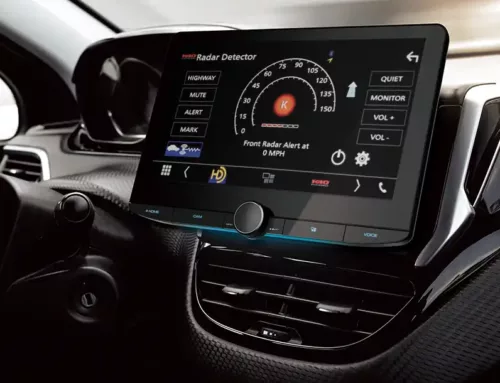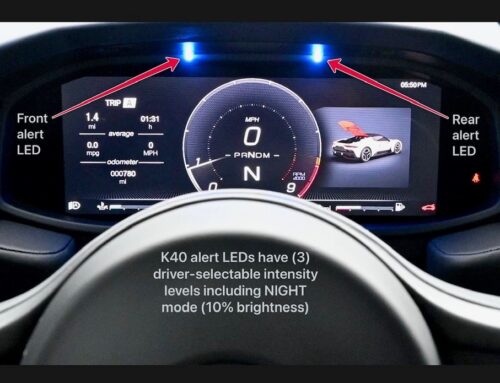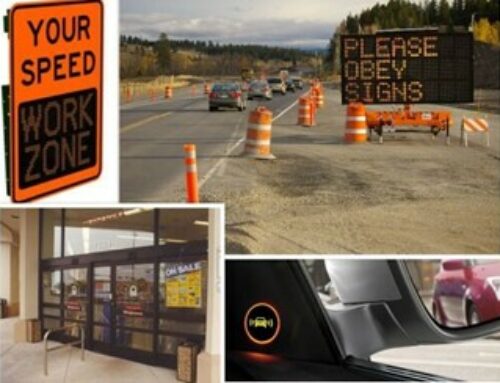K40 Radar FAQs
May 2, 2022

Last month, K40 posted Part 1 of a blog series answering some of the most frequently asked questions (FAQs) answered on its Consult line – 800-323-5608.
The K40 Consult Line is a unique service available to all drivers with questions regarding police speed enforcement and protection options. K40’s favorite thing is to talk to people about their cars and how K40 can help them avoid speeding tickets.
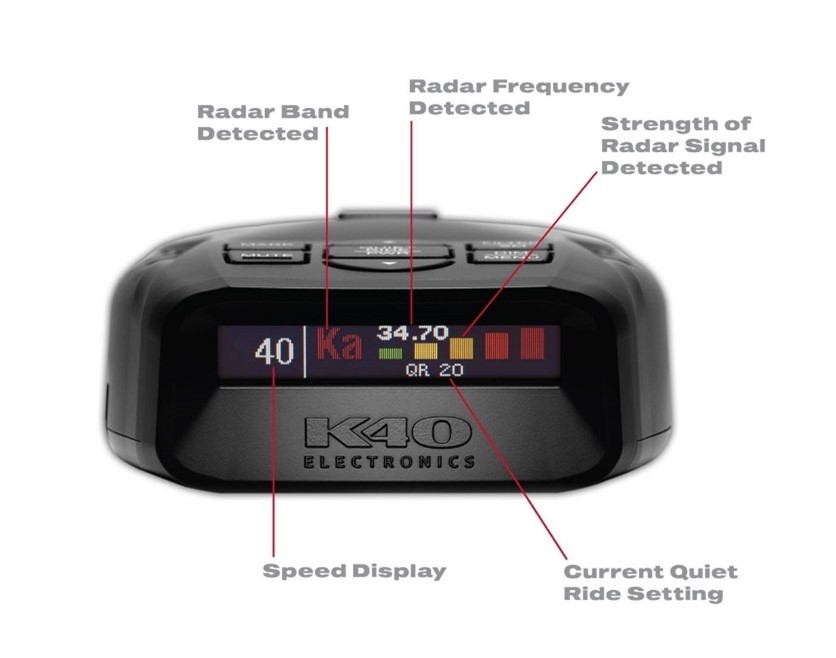
Below is a continuation of frequently asked questions and their answers.
What’s the difference between a portable and a custom-installed radar detector?
The K40 Platinum100 is a portable radar detector that mounts to your windshield and plugs into your vehicle’s 12V outlet or is hardwired directly to a 12V power source. A portable radar detector has a visual screen and voice or tone alerts to tell the driver what radar band signal it receives and signal strength indicating proximity to the signal. These portable or dash mount radar detectors can be removed from the vehicle for use in another vehicle, such as a rental car. Portable radar detectors are “plug and play.” They require no professional installation to use unless the driver wants the unit hardwired into the vehicle.
The K40 Platinum360 and Platinum200 are hidden radar detectors that have components that are discreetly installed within a vehicle’s interior and exterior. The components are not visible and maintain the factory or OEM look of the vehicle’s interior. Drivers receive radar/laser alerts through one or two discreet LEDs mounted in the instrument cluster or dash area, and voice or tone alerts via a hidden hi-def speaker. These systems are designed to automatically turn on and off with the vehicle’s ignition and are controlled via a handheld or custom-installed remote control. Remote radar detectors require expert installation by professional installation specialists.
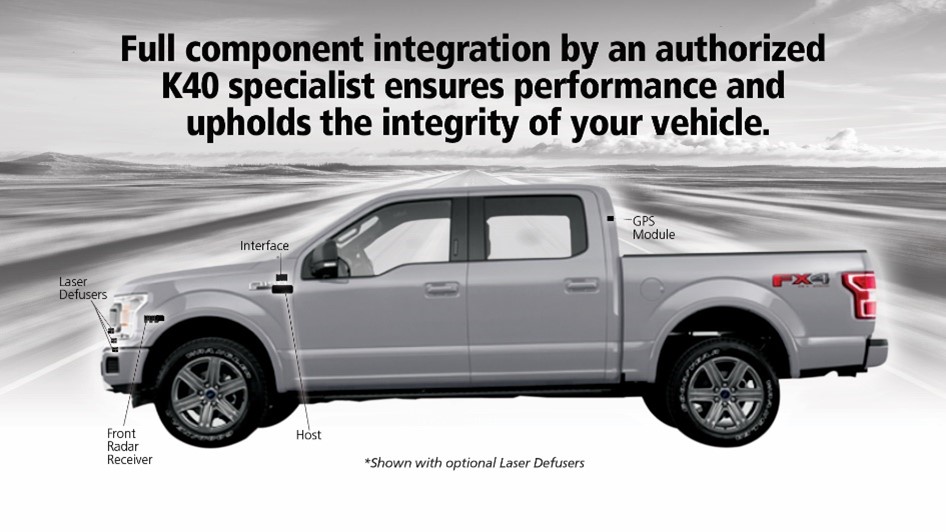
Can I transfer my custom-installed K40 system from my old car to my new car?
Yes! K40 systems are an investment that should last many years. K40’s partner installation specialists can remove the system from your old car and reinstall it in your new vehicle. K40 recommends that you consult with your installing dealer or K40 before reinstallation. K40 or your installing dealer can assess your system configuration to determine that the system will still adequately protect your new car. They will also make you aware of police speed enforcement technology or tactics changes that might require system setting changes or component additions. You can read more about when you might need to replace your radar detector here.
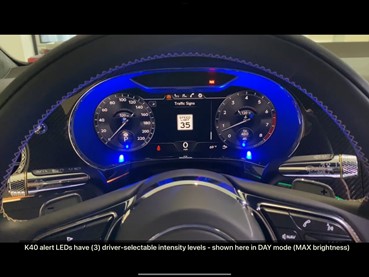
Where will the LEDs be located in my car with a custom installed radar detector?
Each vehicle and driver is different. Drivers work with their installing dealer to determine the optimum placement of the alert LEDs. K40 has many galleries of installation images to help drivers decide which placement they prefer. Suppose you choose not to have holes drilled your your dash or instrument cluster. K40 installing partners have many “no-drill” solutions, including putting the LEDs in air vents, turn signals, dome lights, and even externally mounted pods.
I used a different radar detector brand in the past. Is K40 better?

Drivers have several manufacturers to choose from in the radar detector and laser jammer category. Each manufacturer offers varying protection levels, features, and price points. Manufacturers like K40 Electronics, Escort Radar, and Uniden have been around since the ’80s, while other companies are newer. While all the top-tier brands will provide you with excellent protection from police speeding tickets, there are many differences to consider.
Call the different companies, and ask about the features and benefits of their products, their guarantees, customer service, and dealer network. Ensure that you are comfortable that the products you are purchasing will offer you the right level of protection for you and your vehicle and that you have access to experts should any questions arise during your ownership.
What’s important to you should determine the radar detector you choose.
Does K40 really pay for speeding tickets?
Yes, since 1983 K40 has backed all of its products with the most comprehensive, least restrictive Ticket-Free Guarantee. K40 believes in the performance of its products. You should never get a speeding ticket when K40 products are used correctly. In the unlikely event that you receive a speeding ticket within the first 12 months of ownership, K40 will pay all court fines and fees if the ticket wasn’t issued in a school or construction zone or with a DWI/DUI.
I got a speeding ticket, and my radar detector didn’t go off. Why?
Although most speeding tickets issued are from police radar or laser guns, it is not the only method police have of obtaining a vehicle’s speed. Any of the following could occur, and your radar detector would not alert you.
- VASCAR: Two points of measurement are determined; usually, two lines are painted on the road. These are known as VASCAR lines. The officer waits until a vehicle passes over one of the lines. The officer then starts a timer. When the vehicle passes over the second line, the timer is stopped. By using time over distance calculations, the police officer can determine precisely how fast the vehicle was going.
- PACING: Speeding tickets can be issued due to “pacing.” Pacing is when an officer follows a vehicle, using their own speedometer to clock the driver’s speed.
- AIRCRAFT: Aircraft detection works by having an aircraft in the air communicating with patrol officers on the ground. The aircraft clocks the time it takes a vehicle to travel between two fixed points on the ground. A vehicle is first determined to be traveling at a rate of speed higher than the surrounding traffic. A stopwatch is triggered to measure time once the vehicle crosses the first fixed point. The timer is switched off when the vehicle crosses the second fixed point. The time it takes to pass between the two points is calculated, and an exact speed is determined. The aircraft then relays the vehicle information and speed to the officer on the ground
- LASER: If you are using a windshield mount radar/laser detector, your speed might have been obtained by any means above or by police laser (LIDAR). A portable radar/laser detector can detect laser if the officer’s laser gun shoots the narrow beam of light directly at the radar/laser detector’s mounted position on the windshield, but this is unlikely to happen. With no laser jammers, the officer will obtain the vehicle’s speed, and the driver will receive no alert.
My radar detector alerted, but it was too late, and I got a ticket. Why didn’t my radar detector give me advance warning?
In this scenario, you were likely hit by a police officer using speed enforcement’s “instant-on” technique. The officer will usually be out of sight by sitting on the other side of a hill or curve out of the driver’s view. When the vehicle crests the hill or clears the curve, the officer will turn the gun on and immediately get the vehicle’s speed. There is no advance warning because the radar gun is off until the officer sees your vehicle. This is the most common speeding ticket that K40 reimburses for, so K40 will still pay if you are within your first year of ownership!
How many laser jammers do I need to combat police laser guns?
There isn’t a “one size fits all” solution to laser jamming. K40 offers Laser Defuser™ products a-la-carte so that you and your installing retailer can customize the perfect laser jamming speeding ticket protection for your vehicle. Larger vehicles will require more Laser Defusers to adequately protect against police laser speeding tickets, and rear laser jamming is also an option for any vehicle.
What kind of car do you drive? Is it a black Corvette or a pearl white Cadillac Escalade? These vehicles require vastly different protection from police laser gun targeting due to color and size. It’s all about reflectivity: a beam of light hitting a flat reflective surface on your vehicle and bouncing back to the officer’s gun at the speed of light, allowing them to obtain your vehicle’s speed. Our team is here to help make the right recommendations for your individual needs.
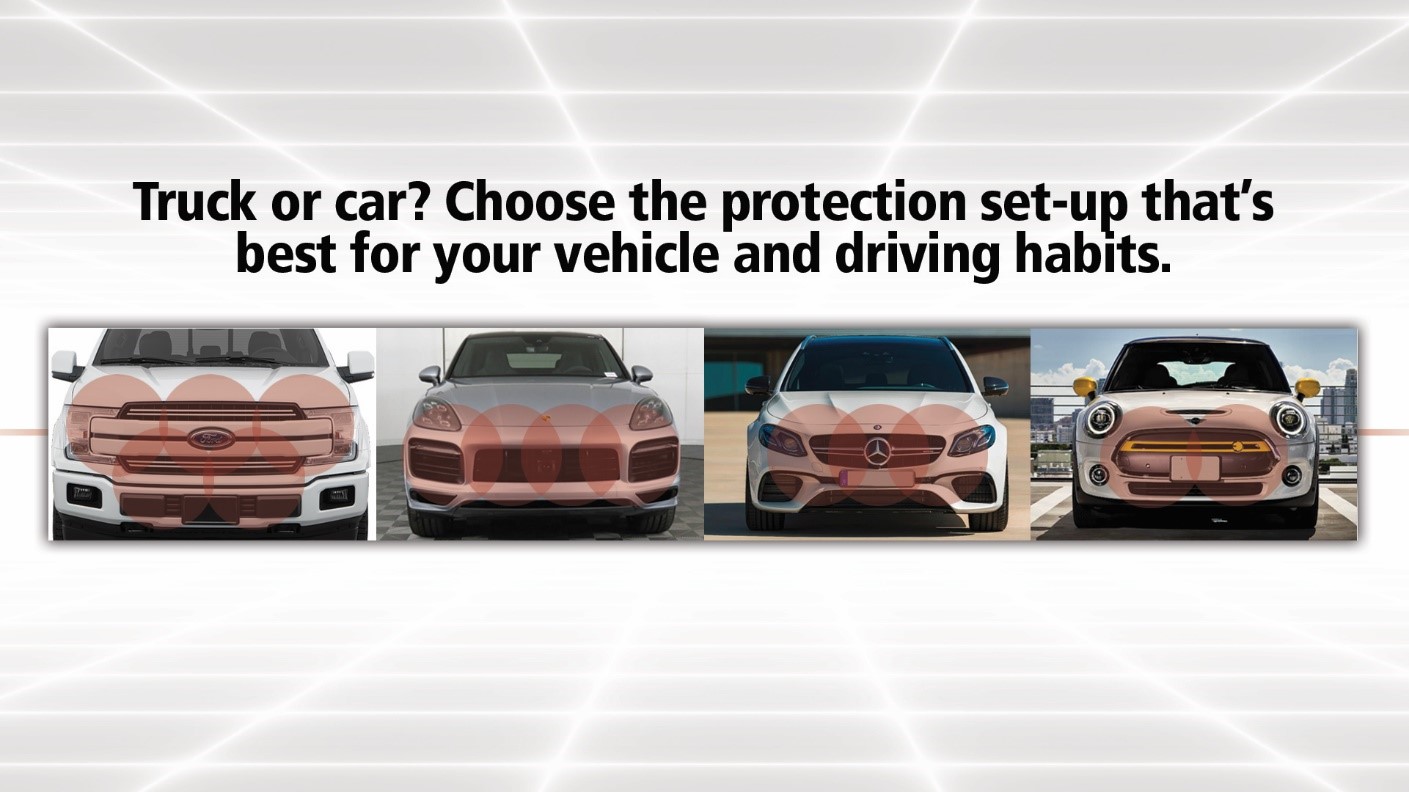
K40 is interested in your complete protection and total satisfaction. If you have a question not covered here, or if you prefer a conversation with a real person, go ahead and give us a call at (800)323-5608. We would love to talk to you.


